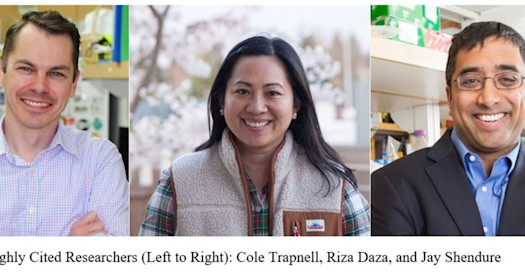
Ovarian cancer ranks fifth in cancer deaths among women in the United States, according to the American Cancer Society. This year, nearly 13,000 women are expected to die from it; just under 20,000 will be diagnosed for the first time.
The Ovarian Cancer Research Alliance, a New York City-based non-profit, states that because treatments are limited, the 5-year survival rate is only 45 percent. BBI’s Dr. Holly R. Harris is committed to enabling women diagnosed with ovarian cancer to live longer. A lot longer.
“For many women, the diagnosis of ovarian cancer can be devastating,” said Harris, an associate professor of epidemiology at the Fred Hutchinson Cancer Center and an affiliate assistant professor in the Department of Epidemiology at the University of Washington. “There is an immediate and urgent need to identify behaviors, such as diet, that may help women live longer lives.”
Harris and colleagues from six other organizations across the United States published a paper in June examining associations between the diets of more than 1,000 women before and after their diagnoses with their life expectancies. They used data from two Nurses’ Health Studies.
Harris is the senior author on the paper, which was published in the British Journal of Cancer. The study offers interesting insights to researchers, clinicians, and, of course, patients. Among the findings:
• Consuming a more inflammatory dietary pattern post-diagnosis is associated with increased mortality in ovarian cancer survivors.
• Limiting the inflammatory potential of diet post-diagnosis could lead to more women living longer-than-expected lives.
• Post-diagnosis, smoking leads to higher death rates among patients; post-diagnosis dietary choices had a stronger impact on survival among smokers than non-smokers.
Among the foods comprising a pro-inflammatory diet are: red and processed meats, sugar sweetened beverages, and refined grains.
“On a population level, if we could alter diet, we could have a massive impact on women’s life expectancies, even those in the mid-to-elevated risk category,” Harris said. “But the society we live in and the lifestyles we have make it hard for people to change their diets, hard for people to alter their behaviors – especially if society is not structured to allow them to it.”
Harris is a member of the Ovarian Cancer Cohort Consortium, or “OC3,” an international group of researchers from more than a dozen nations studying ovarian cancer. It was initiated with funding from a Cancer Research Program Translational Leverage Award – a U.S. Department of Defense project – that Dr. Shelley Tworoger received in 2012. Tworoger, a UW graduate, is the associate center director for Population Science at the Moffitt Cancer and Research Institute in Tampa, Florida. She is also an author on the paper.
The OC3 seeks to “to address the need for well-powered prospective studies… and provides a unique resource to conduct studies of ovarian cancer risk factors, biomarkers, risk prediction, and outcomes while accounting for ovarian cancer subtypes,” according to its website.
“The OC3 is doing incredible work collecting and analyzing data on ovarian cancer, as well as laying foundations for future studies,” Harris said. “Collaboration – building on the strengths of each researcher’s area of expertise – enables a team of researchers to identify issues and trends that one of us alone might not recognize.”
Dr. Kathryn L. Terry, a colleague of Harris, a co-author on the diet paper, and a member of OC3, concurs.
“All of the coauthors have a history of working on the Nurses’ Health Studies,” said Terry, an associate professor in the Department of Epidemiology at Harvard University’s T.H. Chan School of Public Health, and at the Department of Obstetrics and Gynecology, Brigham and Women’s Hospital in Boston. “We were able to pull in individuals with relevant expertise for this study. Furthermore, many of us have shared grants together.”
In addition to their work in the OC3, Terry, Harris, and Tworoger are members of a smaller cohort of researchers, the Ovarian Cancer Epidemiology Analysis Network. The group meets monthly to discuss their current work as well as potential future collaborations. Harris calls it an “epi think tank.”
'We have a vibrant and dynamic exchange of ideas. It provides a safe place with relevant expertise for junior and senior investigators to get input on grant aims and results.' Dr. Kathryn L. Terry, The Ovarian Cancer Epidemiology Analysis Network
Terry noted that those monthly discussions meetings started with trying to share funded research, but spread to include former trainees and external collaborators.
“We have a vibrant and dynamic exchange of ideas,” Terry said. “It provides a safe place with relevant expertise for junior and senior investigators to get input on grant aims and results, as well as to provide opportunities for new collaborations.”
Such collaboration is the foundation, in many cases, of significant scientific discoveries in battling cancer, and represents a hallmark of BBI’s work “exploring new opportunities at the interface of basic science and precision medicine.”


